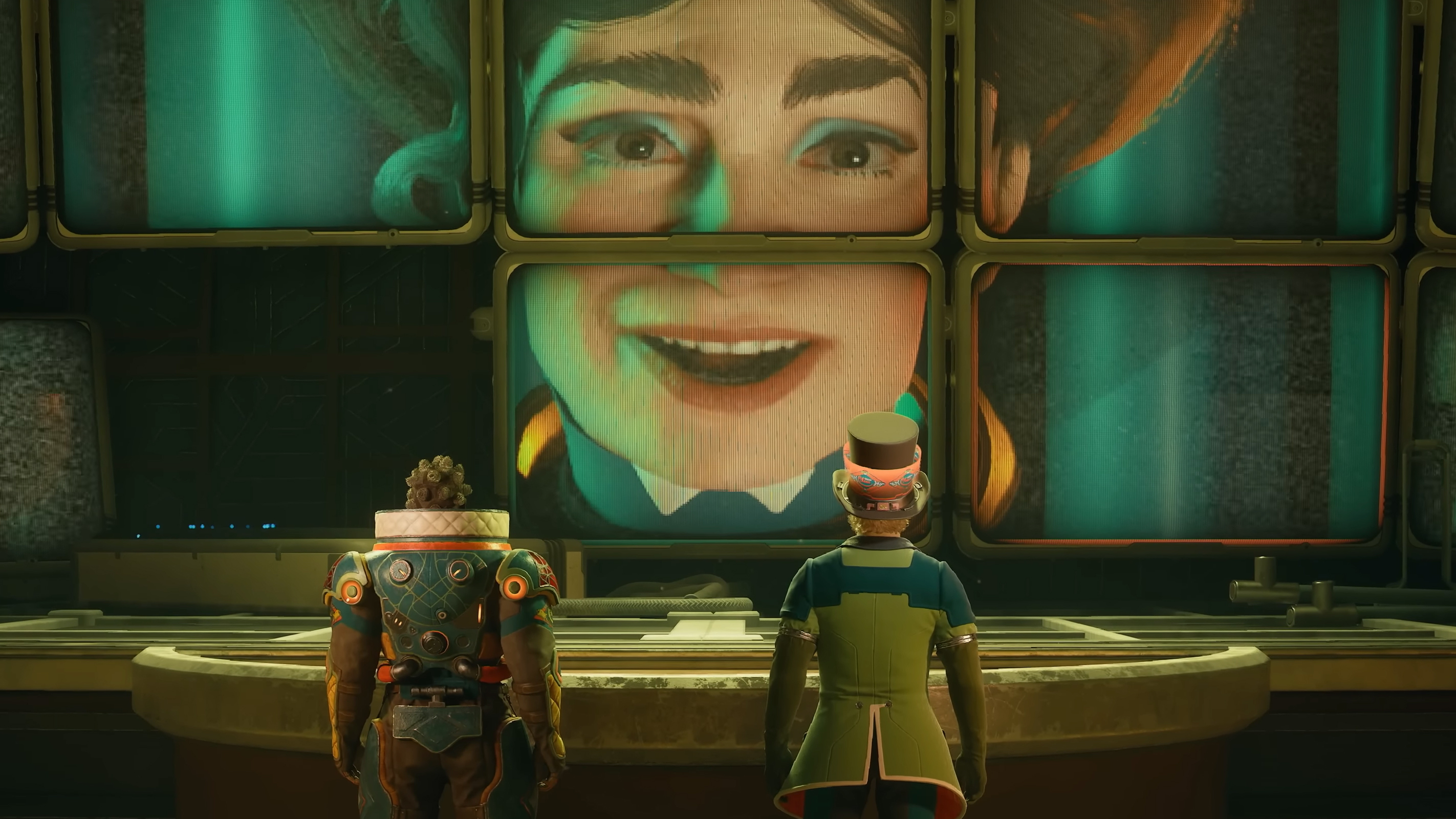
At the heart of Lords of the Fallen is the existence of two parallel realms: The realm of the living, Axiom, and the realm of the dead, Umbral. What makes them special in gameplay is the ability of the player to both reach across, and fully transition between those realms. But there’s a lot more to Umbral than just a Stranger Things-esque Upside Down dimension with creepy tendrils and eyeballs following you wherever you go. So let’s raise our lamps into the unknown and do a deep dive into Lords of the Fallen’s most unique element.
Illuminate the Dead
When your character begins their journey, they’ll be given the Umbral lamp, which is your bridge between the realms of Axiom and Umbral. While you’re in Axiom, you can open up a window into Umbral by holding up the lamp, allowing you to peer into the parallel world, and potentially spot interesting differences or pathways that may provide you with a clue as to where to go. Some gates may impede your progress in Axiom, but when you hold up your lamp, you’ll find that in Umbral, no such gate exists; what may be a gap between platforms in the realm of the living may have solid footing in the realm of the dead.
Not every path can be illuminated with just a lamp, however, and eventually you will have to voluntarily pull yourself into Umbral in order to physically interact with certain objects that will allow you to find a path forward. Coming into Umbral of your own volition comes with a very significant risk, however. You see, while in Axiom, if you die, you’re able to respawn in Umbral, essentially giving yourself a second chance. But if you die in Umbral, you’re actually dead, and will have to do the usual Soulslike journey of retracing your steps from your last checkpoint back to the spot you died in order to claim your lost Vigor.
This “journey” of running back to your dropped currency when you die is one of the main things that prompted the development of this umbral mechanic. The team was looking for a way to innovate on that “deathloop” that we’ve seen so many times in other Soulslikes and wanted it to check a series of boxes: First, they wanted to avoid the cycle of the game over screen, racing back to get your fallen resources, and repeating this over and over again every time you die. They also wanted to mitigate the frustration caused from sudden deaths that force the player to deal with the consequence of failure. And finally they wanted a system where you didn’t lose your experience upon the first death, and instead had the option to disengage, unless you were in a boss fight.
In the words of Creative Director Cezar Virtosu: “Plunging the player into a shadowy realm of entropic horror ticked all these conditions of satisfaction. The moment we engaged with these concepts such as: Where does the player go upon death? If they resurrect on the spot should there be gameplay modifiers in place to allow a change of approach? How do they resume normal play? [When we started asking those questions] We opened Pandora’s box and the true challenge was to reign in all the emerging ideas”
The final thing to note on this particular aspect of Umbral is that while you cannot physically interact with anything in Umbral while you’re in Axiom, enemies in Umbral are certainly able to interact with you, and if something in Umbral attacks you while your lamp is out, you’ll get pulled into the land of the dead, which basically amounts to an instant kill on one of your lives. So be careful when you’ve got that lamp out.
Umbral Combat
The duality of the realms of the living and the dead also comes into play during combat. Your lamp is able to do more than just provide a window into the Umbral realm, it’s also able to literally rip the souls right out of enemies for a short period of time, allowing you to bypass their physical form and deal damage directly to their soul.
This is called a Soul Flay, and it’s an extremely important technique when it comes to dealing with tougher enemies. The damage you deal to an enemy’s soul is treated as Withered Damage, which is basically temporary damage that gets delivered all at once, if you can land a single hit once the soul returns to the enemy’s body.
There’s another, even more useful function of a Soul Flay, however. When you yank a soul from an enemy, you can direct which way you want it to go. The body follows the soul in this case, so if you were to yank an enemy’s soul off a ledge, you can instantly kill tough enemies in a single blow.
This is obviously a super powerful technique, so it is limited by the number of Soul Flay charges you have available. You can refill your charges by using another one of the lamp’s special abilities: Soul Siphon. You can use it even while in Axiom to absorb both vigor and Soul Flay charges from surrounding enemies.
There’s one other extremely important use of the Soul Siphon technique. Certain enemies will be empowered by an Umbral parasite that makes them extremely resilient. If you’re able to kill the parasite floating around the enemy, you’ll remove their buff and make them much easier to kill, but here’s the catch: Remember that if you’re in Axiom, you can’t interact with enemies in Umbral. Heck, you won’t even be able to see the parasite.
It’s an interesting dynamic in the way you have to work extra hard to keep the advantage of remaining in Axiom.
So in order to deal with the parasite while in Axiom, you’ll need to first find it by raising your lamp, run over to it, and use a quick Soul Siphon to burn it away, all while avoiding the actual enemy you’re fighting against. Of course, if you’re already in Umbral, you can just take out the parasite with a simple attack, but it’s an interesting dynamic in the way you have to work extra hard in order to keep the advantage of remaining in Axiom.
Returning to Axiom
As we’ve established, it’s very easy to enter Umbral, but it’s actually pretty difficult to leave. In order to return to Axiom, you’ll need to find a Vestige, which is Lords of the Fallen’s version of a bonfire; a flower bed where you can plant a Vestige Seed to create your own checkpoint; or find an effigy, which are like mini vestiges that can bring you back from Umbral, but won’t let you rest, level up, or warp. When it comes to the flower beds, you’ll need to take care to not waste a Vestige Seed on an unneeded checkpoint, however, as the resource is quite rare, and you’d hate to come across a much needed flower bed, and not have the seed to plant.
Remaining in Umbral is a risky endeavor, as the longer you hang around in the realm of the dead, the worse it is for you. There’s an affliction called Umbral Dread, which deepens every passing second you remain in Umbral, marked by a creepy eye in the top right of the UI. As the affliction deepens, the player will start seeing umbral echoes and illusions of monsters that will occasionally materialize into existence. The worse the Umbral Dread gets, the stronger these monsters will become, ultimately culminating in the appearance of a monster the developers didn’t want to spoil, but described as being the Apex Predator of the Umbral realm. But there is a risk/reward element to remaining in Umbral as well, as the longer you remain, the higher your vigor multiplier will go, granting you more currency with each enemy you slay that you can use for leveling up. On top of that, there are Umbral-only treasure chests with sets of gear, weapons, and important upgrade materials. So if you’re able to brave through the horrors of Umbral, you stand to come out of the other side much richer than when you came in.
There are plenty more surprises that await you in Umbral, but those are left for you to discover on your own when Lords of the Fallen releases on PC, Xbox Series X, and PlayStation 5 on October 13.
Mitchell Saltzman is an editorial producer at IGN. You can find him on twitter @JurassicRabbit





